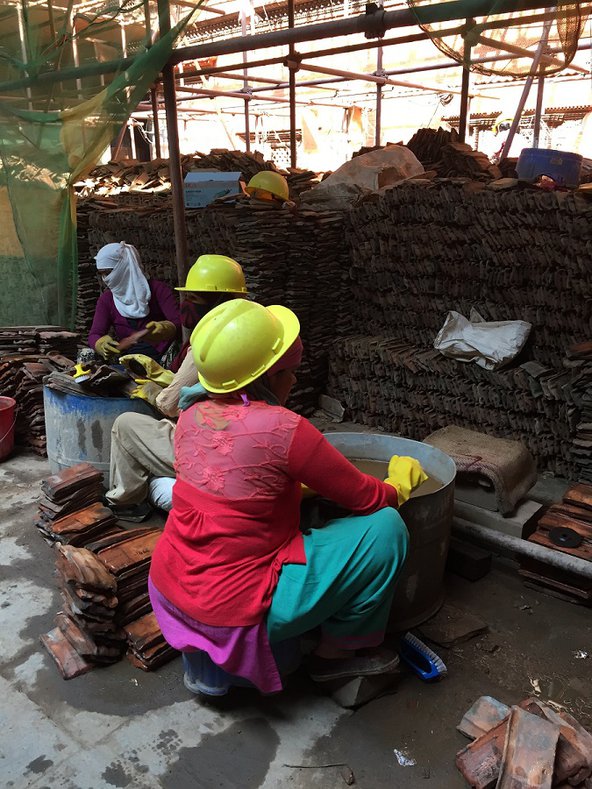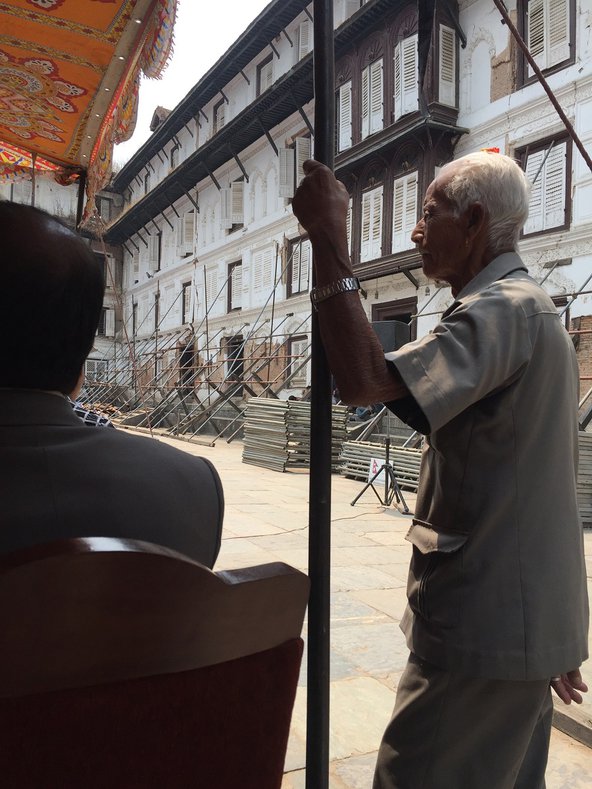Improving seismic safety in Kathmandu’s World Heritage Sites
by Professor Caroline Knowles
26 Jun 2018
Cities & Infrastructure programme highlights
On 25 April 2015, an earthquake measuring 7.8 on the Richter scale hit Nepal. It was followed by hundreds of aftershocks and another major earthquake on 17 May, killing an estimated 9,000 people.
The earthquakes damaged and, in some cases, destroyed 961 ancient monuments across the country and with them, Kathmandu’s intangible heritage, much of which lies in and around the Valley’s three Durbar, or royal, squares.
A new research project, funded through the British Academy Cities and Infrastructure Programme, titled Reducing Disaster Risk to Life and Livelihoods by Evaluating the Seismic Safety of Kathmandu’s Historic Urban Infrastructure and directed by Robin Coningham, University of Durham, is making use of this terrible disaster to learn important lessons for the future.

UNESCO World Heritage site, Durbar Square, Kathmandu. Photo by Caroline Knowles.
Future quakes
Using a new methodology they have devised between them, structural and geotechnical engineers, archaeologists, environmental scientists and architects probe connections between the soil beneath the monuments, their foundations and the above-ground superstructures. Their results are starting to show which monuments are likely to be endangered by future earthquakes. This will save time and money restoring monuments that don’t need it. It also makes it possible to draw up a restoration plan identifying the monuments most in need of strengthening.
The research team’s results also identify which maintenance techniques over the last 50 years actually hold up in an earthquake, a survey that has important implications in future restoration for seismic resilience. Equally innovative, the team has created some 3D reconstructions through web-scraping to reconstruct images of destroyed and disappeared parts of the monument landscape. These discoveries and insights will travel to other monuments hit by disasters in in other places.
Although not without tensions, these innovations resulting from working across disciplines are already changing the ways in which city authorities tackle restoration of the monuments. Passionate activists and well-connected local partners, including a former Director-General of the Government of Nepal’s Department of Archaeology, former ICOMOS and UNESCO consultants, and experts at Kathmandu’s Tribhuvan University, are important in driving these changes.

Inauguration of the Kathmandu Earthquake Museum. Photo by Caroline Knowles.
Understanding local context
The monuments are integral to the architecture of local people’s everyday lives. A portal between heaven and earth, the monuments are the focus of daily rituals and special celebrations. The research team is therefore actively consulting local people about the present and the future of the monuments. A social survey to determine what the local population thinks about their monuments, conducted by Masters students from Tribhuvan University, has just been completed. Heightened public interest followed the team’s discovery, while digging beneath collapsed monuments revealed that the city was in fact older than experts believed. The unearthing of parts of an eighth-century city beneath a 10th-century city sparked local interest and debate about which foundations to leave exposed and how they might be a resource in developing tourism.
Suggested ways of further involving local people in the life of the monuments are expected to come from the social survey and the public events that are being held. The most high-profile of these events is Resilience in the Rubble, an exhibition of photography and artifacts commemorating the earthquake funded through the Cities and Infrastructure Programme. The exhibition inaugurated the earthquake gallery and museum on the third anniversary of the disaster, as a permanent monument to those who died and a public space for local people to use in the carefully restored Palace Treasury. Since it was opened in late April this year, 45,000 people have visited the museum.


